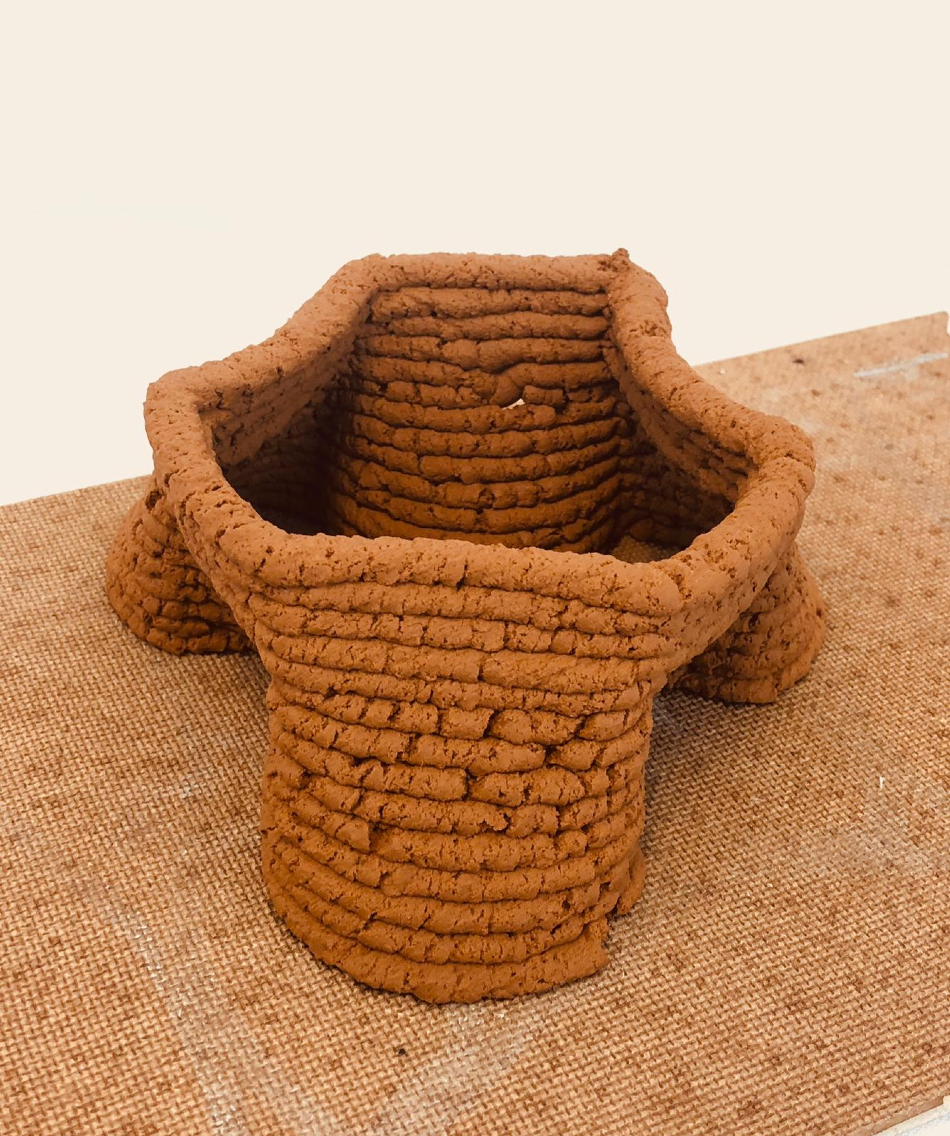Aug 21 2020
Currently, the construction industry is experiencing two major challenges: one is the demand for sustainable infrastructure and the other is the necessity to repair degrading roads, bridges, and buildings.
 Scientists have developed a method to 3D print structures using local soil. Image Credit: Aayushi Bajpayee.
Scientists have developed a method to 3D print structures using local soil. Image Credit: Aayushi Bajpayee.
Although concrete has been the preferred material for several construction projects, it exhibits a higher carbon footprint, leading to high energy costs and waste. Now, scientists have reported advancements toward a sustainable building material prepared from local soil, using a 3D printer to make a load-bearing structure.
The team presented its findings recently at the American Chemical Society (ACS) Fall 2020 Virtual Meeting & Expo. The Expo featured over 6,000 presentations on an extensive range of science topics.
The environmental impact of the construction industry is an issue of growing concern. Some researchers have turned to additive manufacturing, or building structures layer by layer, which is often done with a 3D printer. That advance has begun to transform this sector in terms of reducing waste, but the materials used in the process need to be sustainable as well.
Sarbajit Banerjee, PhD, Project Principal Investigator, Texas A & M University
Construction projects involving extruded concrete layers have emphasized the ability of additive manufacturing to build structures fast and cost-effectively. However as per reports from the International Energy Agency, concrete manufacturing is accountable for around 7% of carbon dioxide emissions, and it cannot be recycled.
Historically, humans used to build with locally sourced materials, such as adobe, but the move to concrete has raised many environmental issues. Our thought was to turn the clock back and find a way to adapt materials from our own backyards as a potential replacement for concrete.
Aayushi Bajpayee, Graduate Student, Sarbajit Banerjee’s Lab, Texas A&M University
Bajpayee presented the study at the meeting. A benefit of using local soil in construction is that it avoids the need for the materials to be manufactured and shipped to the building site, thus decreasing both expenses and damage to the environment. Also, Banerjee and Bajpayee state that additive manufacturing with soil could be utilized someday beyond Earth, to make settlements on the moon or even Mars.
Generally, soil is classified by the layers of materials contained in it, starting with the top organic layer in which plants grow until the hard bedrock of the Earth’s crust. Below the first organic layer lies clay, which gives soil its plastic and moldable texture, which was leveraged by the team in this project.
The team started by gathering soil samples from a colleague’s backyard and combining the material with a new eco-friendly additive to customize it to bind together and easily extrude it using the 3D printer.
Since soils differ very much based on location, the goal of the researchers was to have a chemistry “toolkit” with the ability to convert any kind of soil into printable building material. Using this, Bajpayee constructed small-scale test structures, which are cubes that measure two inches on either side, to test the performance of the material when extruded into stacked layers.
The next step was to investigate whether the mixture was load-bearing, which implies that it will endure the weight of the layers and other materials utilized in construction, like insulation and rebar.
The researchers achieved this by strengthening the clay mixture by “zippering” the microscopic layers on its surface to inhibit it from absorbing water and becoming enlarged, which would compromise the printed structure.
Using this technique, the team demonstrated that the material could hold twice the weight held by the unmodified clay mixture.
As a next step, the researchers intend to enhance the load-bearing abilities of the soil to optimize their test structures and reach as close to an alternative for concrete as possible.
Moreover, they are collecting data to observe whether such 3D printed structures are as eco-friendly as they imagine, particularly with regard to recycling ability and carbon footprint.
As soon as the researchers gain better insights into the feasibility, functionality, and chemistry of building with local soils, they intend to further find out how this technology can be utilized beyond Earth.
The team acknowledges funding and support from the X-Grants Program at Texas A&M University.